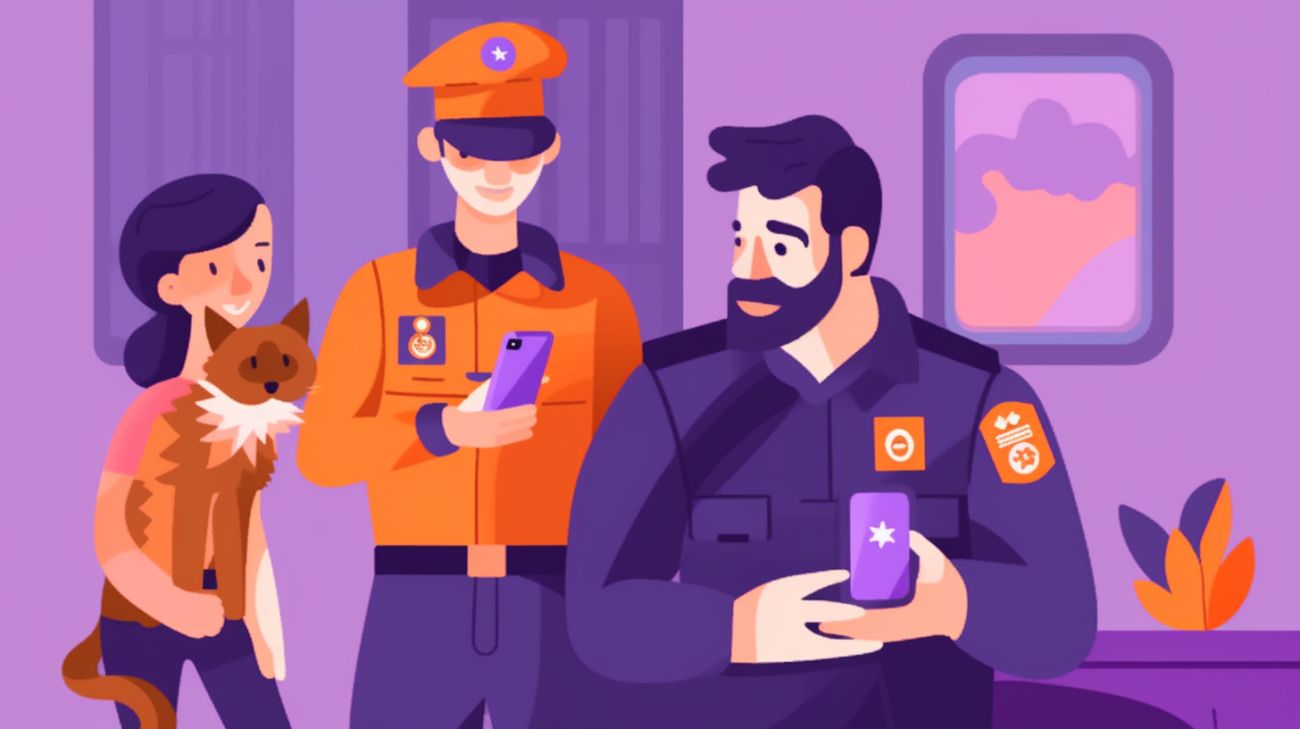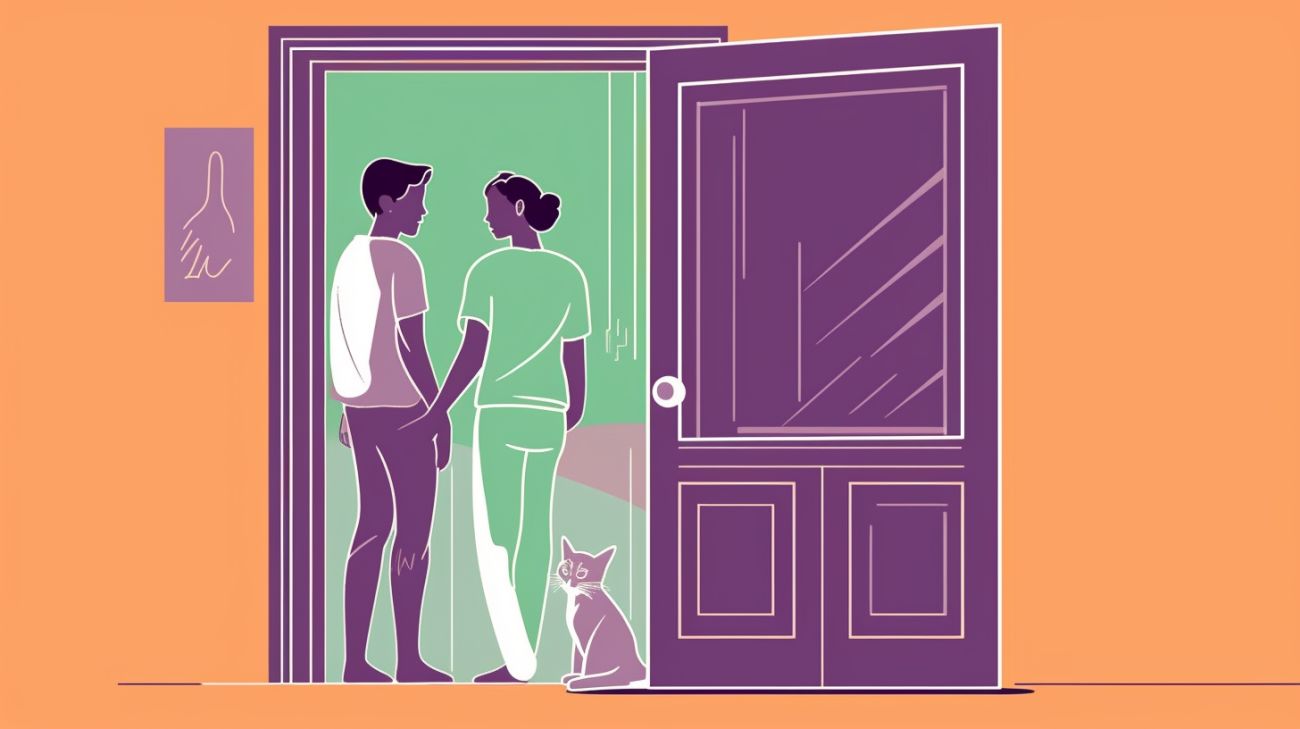Key takeaways
A stolen cat can be a heartbreaking experience for any pet owner. It's essential that pet owners understand the legal aspects of pet theft while providing guidance on recognizing signs and responding effectively within the legal framework.
By being proactive and informed, you can better protect your beloved cat and support others who face similar situations.
So, use this guide in your time of need. We'll also explore preventative measures to keep your cat safe so you don't have to experience this again in the future!
Quick Navigation
Legal aspects of stolen cats
Knowledge of the legal aspects is crucial when dealing with a stolen cat.
Understanding pet theft laws & regulations

Has my neighbor stolen my cat?
1.
Gather evidence: Document any suspicious activity or evidence pointing to your neighbor's involvement in your cat's disappearance.
2.
Communicate with your neighbor: Approach your neighbor calmly and politely, discussing your concerns and asking if they've seen your cat. If your cat is missing, consider sharing a missing cat poster with your neighbor to help spread the word.
3.
Seek mediation: If the conversation with your neighbor doesn't resolve the issue, consider seeking mediation from a neutral third party to facilitate a resolution.
4.
File a police report: If you have substantial evidence and believe your cat was indeed stolen, file a police report to start an official investigation.
5.
Consult with an attorney: In some cases, you may need legal advice to understand your rights and navigate the situation effectively.

Maintain a calm and respectful demeanor when dealing with neighborly disputes.
Reporting stolen cats: contacting authorities & legal procedures
Description of your cat: Provide a detailed physical description, including any distinctive markings or features.
Photos: Include clear, recent photographs of your cat, taken from various angles.
Microchip information: If your cat is microchipped, provide the microchip number and registration details. Learn how to find a microchipped cat.
Proof of ownership: Offer documents such as adoption papers, purchase receipts, or vet records.
List of potential witnesses: Note down any neighbors or passersby who might have seen the theft or suspicious activity.

You're not alone in this journey, and support is available to help you navigate this difficult time.
Emotional support and coping strategies for stolen cat owners
Monitoring animal shelters and rescue organizations for your lost cat
1.
Create a list of nearby shelters and rescues: Gather contact information for organizations in your area and call them regularly to check if your cat has been brought in.
2.
Visit the shelters in person: Staff may be busy, so visiting shelters in person can help ensure you don't miss any opportunities to find your cat.
3.
Provide a detailed description: Share a clear and thorough description of your cat, including unique markings or characteristics, to help shelters identify your pet. You can also learn about lost cat behavior to better understand how your cat might act while lost.
4.
Share a recent photo: A clear photo can help shelter staff and volunteers recognize your cat if they spot it.
5.
Post flyers and utilize social media: Spread the word about your missing cat by posting flyers near shelters and on community bulletin boards, as well as sharing the information on social media platforms and local lost pet groups. Discover the benefits of using a cat finder and targeted ads to find your kitty.
Being proactive in your search can make a difference. Check out this guide on how to attract a lost cat for more tips on bringing your furry friend home.

How to keep your cat safe from theft
Install a cat-proof fence or enclosure in your yard to provide a safe outdoor space. Learn about the top 7 hideouts where cats go when they run away to better understand their behavior.
Keep your cat indoors during high-risk times, such as nighttime or when fireworks are expected. Check out our guide on how to find a missing cat at night for more information on searching during these times.
Supervise your cat closely when they're outside, using a harness and leash if necessary. Get to know how far away a cat can find its way home to help you in future searches.
Establish a routine for your cat, including regular feeding times and indoor activities to keep them entertained. Discover essential techniques to try when trying to get your cat out of hiding.
Continuously monitor and maintain your chosen cat tracker, ensuring it's working properly and always up-to-date. Learn about the chances of finding a lost cat after 24 hours and what to expect during this critical time.

Take preventive measures to keep your cat safe and secure.
FAQs
What do you do if someone steals your cat?
If someone has stolen your cat, call the police immediately. The quicker and more proactive you are, the more chance you'll have of getting your cat home.
Is stealing a cat a crime?
Yes, stealing a cat is a crime in most countries and states.
Will the police do anything about a stolen cat?
Yes, the police can help you if you think your cat has been stolen. Cat theft is a crime, so filing a police report can help start a full investigation and get your kitty home.
What if my neighbor stole my cat?
If you think your neighbor has stolen your cat, talk to them about it. In a calm and polite manner, ask them whether they have seen your missing cat and provide them with photos and a missing cat poster. If they don't admit to it, gather evidence and file a police report.
Can a stolen cat find its way home?
If your stolen cat was abandoned, they may be able to find their way home using their powerful sense of smell. However, it's likely they are disoriented and far away, which will make it very difficult for them to understand their surroundings.
How common is cat theft?
In the UK, there has been around 1300 cases of stolen cats in the past 5 years. However, all around the world cat theft is becoming more common for breeding purposes.
How do you know if a cat is stolen?
If your cat seemed to have disappeared suddenly, then they may have been stolen. It's not easy to know for sure, so you will need to gather evidence and ask your neighbors for help.



